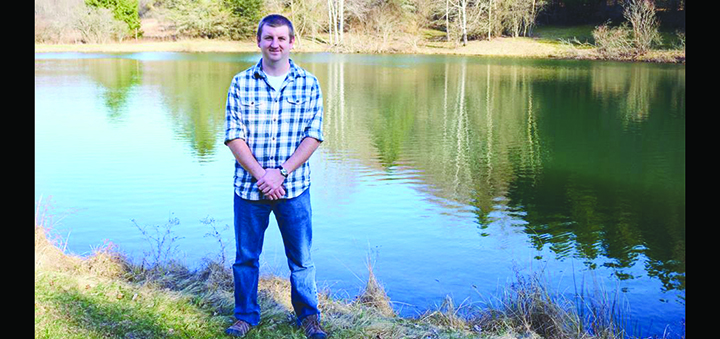Fishing The Bass Spawn
Published:
June 17th, 2020
By:
Eric Davis

Where and how do you look for the ideal conditions for fishing bass during the spawn?
Ideal spawning conditions for largemouth bass occur when the water temperature is between 55 and 65 degrees.
Male largemouth bass will choose a bed location in water less than 8 feet deep, usually. In super clear waters they may make beds deeper. Once the male has the bed cleared out, a female will deposit her eggs. The male will then fertilize the eggs and will guard the nest from potential predators until the eggs hatch.
The male will continue to protect the fresh hatchlings, called fry, as they grow until they can fend for themselves. Female bass will hang out in deeper water near the spawning area until conditions are exactly right to lay her eggs. Up until laying her eggs, she will feed heavily to aid in egg production. As is common in most fish species, female bass are larger than male bass so female bass are more sought after especially if fishing in a tournament.
Spawning largemouth bass can be a challenge at times. Since they spawn so shallow, they can see your boat approaching which can cause them to swim off if there are not eggs in the nest yet. A good pair of polarized sunglasses can help you spot bass sitting on beds from a farther distance, so you do not bump them off the nest with your boat. If looking for females, use your fish finder to look for marks in those deeper areas near good spawning habitat.
Males that are sitting on beds can be triggered into biting by imitating nest predators with soft plastic lures. Salamanders are a top nest predator so soft plastic lizards are a bed-fishing staple. Fish them Texas-rigged with a moderately heavy weight so it stays put in the bed. Barely move it once its in the bed. Keep an eye on the bass as it may descend on the lizard and stare at it before picking it up to remove it from the bed. Some anglers prefer to use brightly colored soft plastics, so they are easier for the angler to see when the fish picks it up to set the hook. Other soft plastics styles that are popular for bed fishing include crawfish and curly-tailed worms.
Females that are staging prior to spawning can be caught on a variety of lures. Lipless crankbaits and regular crankbaits let anglers cover a lot of water until they find where the fish are hanging out. Spinnerbaits are another good option. Use natural color patterns if the water is clear and use bright patterns in cloudy or murky water. A drop shot rig, or a jig can be used to more methodically fish an area if you think fish should be there.
Since spawning is dependent upon water temperature, different parts of the same body of water may be in different phases of the spawn. Usually the northern end of the lake or pond heats up before the southern end, so the spawn starts sooner at the northern end. Bottom cover can also influence water temperature. Dark rocky bottoms will hold the sun’s heat better than lighter bottoms, making the water warm up faster. The same goes for stumps or sunken trees.
This Saturday (the 20th) marks the beginning of black bass season in New York. The two species of black bass we have locally are the largemouth bass and the smallmouth bass. Catch and release fishing is allowed for these species when the season is closed for keeping them. Once the season begins, anglers can keep five bass that are at least 12 inches long per day. The makeup of what you keep can be mixed, for example 2 largemouth and 3 smallmouth bass, or all one species.
I would like to wish a Happy 90th Birthday this Friday to Cleon Salisbury of Greene. I had the pleasure of meeting Cleon last summer and got to hear some of his stories about hunting and trapping in Chenango County and across New York from his lifetime. Hopefully we can catch up again this summer!
Author: Eric Davis - More From This Author
Comments




